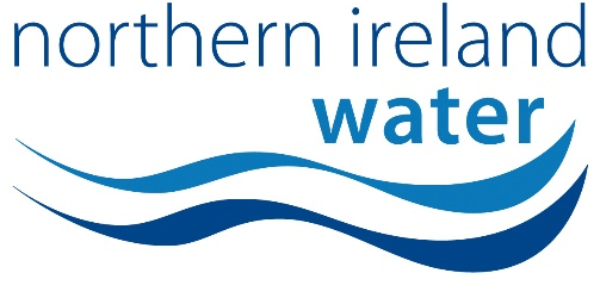Taking collaborative action to reduce water leakage
Northern Ireland Water is successfully engaging the help of its 1.8 million customers to reduce water leakage. It has developed an ArcGIS app that allows members of the public to report leaks easily and accurately, helping the organisation to find and fix leaks faster and preserve precious water resources.
Just 2 months needed to create app in house using ArcGIS Enterprise and Survey123
1,700 incidents reported by members of the public using ArcGIS app in first year
31% increase in incidents reported after app was shared via social media
The Challenge
Like other water utilities in the UK, Ireland and around the globe, Northern Ireland Water has a responsibility to detect and repair any leaks in its pipes. The organisation is responsible for maintaining a vast network of 27,000 km of water mains, a distance equivalent to a journey from Northern Ireland to Australia and back. It has a dedicated water leakage detection team, but with so many kilometres of pipes to survey, across a vast and predominantly rural area, detecting water leaks is a considerable challenge.
Members of the public occasionally supported Northern Ireland Water by reporting leaks they saw, either by telephone or by email. However, these reports generally included vague descriptions of where the leaks were and how much water was being released. Consequently, it was difficult for Northern Ireland Water to assess the relative priority of different reports and then find the leaks on the ground.
The Esri suite of tools is so configurable that Northern Ireland Water can be self-sufficient and develop its own solutions in-house, as business needs arise.
Sean O'Boyle – Asset Information Development Manager, Northern Ireland Water
The Solution
Northern Ireland Water wanted to make it easier for members of the public to report potential leaks, as well as encourage more people to play an active role in water conservation. A new business improvement initiative was launched, and employees from multiple teams came together to design and implement an app that would allow people to report leaks from their mobile devices for the first time.
The resulting solution, called Report-a-Leak, was developed in-house in just two months using ArcGIS Enterprise and ArcGIS Survey123 from Esri coupled with MS Power Automate. As Northern Ireland Water had an existing ArcGIS licence, the app was developed at no additional cost to the business. “The Esri suite of tools is so configurable that Northern Ireland Water can be self-sufficient and develop its own solutions in-house, as business needs arise,” says Sean O’Boyle, Asset Information Development Manager at Northern Ireland Water.
Members of the public can access the Report-a-Leak app via the Northern Ireland Water website. Using their mobile phones, they can enter a description of the leak in an ArcGIS Survey123 form, along with an accurate location on a map and a geo-tagged picture of the problem. As soon as the customer presses the send button, the report is routed via ArcGIS Enterprise and MS Power Automate to the organisation's Customer Relations Centre. The team then logs the incident, creates a work order and sends it to the relevant team, all within a matter of hours. People who submit reports receive automated messages thanking them for their help and advising them that the issue will be investigated promptly.
The ArcGIS is helping us to work more collaboratively with our customers to preserve our water resources in Nothern Ireland.
Mark Walsh - CRC Digital Team Manager, Northern Ireland Water
The Benefits
350% increase in the reporting of incidents
The Report-a-Leak app has led to more than a threefold increase in the number of potential leaks reported by the general public. Previously, around 480 incident reports were typically made by phone and email per year, whereas 1,700 reports were made via the new app alone in its first year. While some reports generally turn out to be surface run-off and other issues unrelated to leaks, the increased number of reports contributes to larger numbers of leaks being fixed.
Faster action to fix leaks
When reports are made by the general public, works orders are now created and passed out to the correct team for investigation the very same day. Moreover, the work orders now contain accurate map locations and images of the leaks, enabling teams in the field to find them easily. “Every minute can really make a difference with a major burst,” explains O’Boyle. “If we get more accurate location information from the public, more quickly, we can go to the right place straight away, fix the problem and potentially prevent the loss of large volumes of water.”
Greater engagement in water conservation
Northern Ireland Water considers the Report-a-Leak app to be an important tool for engaging with customers and encouraging them to support its water conservation efforts. In the heatwave of July 2021, the organisation shared the app via social media, resulting in almost 200 reports from the general public that month, a 31% increase on the previous month. “The Report-a-Leak app is a turning point for us,” says Mark Walsh, CRC Digital Team Manager, Northern Ireland Water. “ArcGIS is helping us to work more collaboratively with our customers to preserve our water resources in Northern Ireland.”
Better customer experience
Using the Report-a-Leak app, members of the public can now report a leak in less than a minute. They don’t need to wait to get through to a call centre or remember to write an email when they get home and then respond to follow-up enquiries from Northern Ireland Water asking for more detailed information. “People understand the importance of conserving water and want to help,” Walsh says. “The Report-a-Leak app makes it easy for them to do that.”


